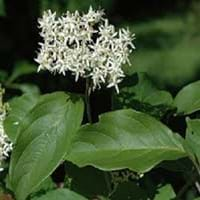Life Span
Perennial
Perennial
Type
Bulb or Corm or Tuber
Shrub
Origin
South America, Argentina
United States, Northeastern United States, Mid-Atlantic United States, Southeastern United States
Types
Not Available
not available
Habitat
Temperate Regions
Banks, Lake Sides, Shores of rivers or lakes
USDA Hardiness Zone
5-9
5-8
Sunset Zone
21,22
3b, 4, 5, 6, 7, 8, 9
Habit
Clump-Forming
Oval or Rounded
Flower Color
Light Blue, Light Purple, Silver, Sky Blue
Ivory
Flower Color Modifier
Bicolor
Not Available
Fruit Color
Not Available
White
Leaf Color in Spring
Green, Light Green, Gray Green
Green, Dark Green
Leaf Color in Summer
Light Green
Dark Green
Leaf Color in Fall
Several shades of Green
Dark Green, Brown, Dark Red
Leaf Color in Winter
Light Green
Not Available
Leaf Shape
Grass like
Acuminate
Plant Season
Spring
Summer, Fall
Sunlight
Full Sun, Partial Sun, Partial shade
Full Sun, Partial Sun, Partial shade
Growth Rate
Medium
Medium
Type of Soil
Clay, Loam, Sand
Clay, Loam, Sand
The pH of Soil
Acidic, Neutral, Alkaline
Acidic, Neutral, Alkaline
Soil Drainage
Well drained
Average
Bloom Time
Early Spring, Spring, Late Winter
Early Summer
Tolerances
Drought
Wet Site
Where to Plant?
Container, Ground
Ground, Pot
How to Plant?
By dividing rhizomes, tubers
Cuttings, Divison, Stem Cutting
Plant Maintenance
Medium
Medium
Watering Requirements
Average Water Needs, Do Not over Water, Requires regular watering
Average Water Needs
In Summer
Lots of watering
Lots of watering
In Spring
Moderate
Moderate
In Winter
Average Water
Average Water
Soil pH
Acidic, Neutral, Alkaline
Acidic, Neutral, Alkaline
Soil Type
Clay, Loam, Sand
Clay, Loam, Sand
Soil Drainage Capacity
Well drained
Average
Sun Exposure
Full Sun, Partial Sun, Partial shade
Full Sun, Partial Sun, Partial shade
Pruning
Remove damaged leaves, Remove dead branches, Remove dead leaves
Remove damaged leaves, Remove dead branches, Remove dead leaves
Fertilizers
All-Purpose Liquid Fertilizer
All-Purpose Liquid Fertilizer
Pests and Diseases
Slugs, Snails
Red blotch
Plant Tolerance
Drought
Drought
Flower Petal Number
Single
Single
Foliage Texture
Medium
Medium
Foliage Sheen
Matte
Matte
Attracts
Bees, Birds, Hummingbirds
Birds
Allergy
Not Available
Unknown
Aesthetic Uses
Showy Purposes
Ground Cover, Wild gardens, Woodland margins
Beauty Benefits
Not Available
Not Available
Environmental Uses
Air purification
Air purification
Medicinal Uses
No Medicinal Use
Not Available
Part of Plant Used
Flowers
Not Available
Other Uses
Not Available
Acts as a natural source of rain water for birds and insects.
Used As Indoor Plant
Yes
No
Used As Outdoor Plant
Yes
Yes
Garden Design
Container, Lawns and Turf, Mixed Border, Rock Garden / Wall, Wildflower
Foundation, Hedges, Mixed Border, Screening, Wind Break
Botanical Name
Ipheion uniflorum
CORNUS amomum
Common Name
Spring Starflower, Springstar
silky cornel
In Hindi
Spring Starflower
Kinnikinnick
In German
Frühling Borretsch
Kinnikinnick
In French
Spring Starflower
Kinnikinnick
In Spanish
primavera Flor de estrella
Kinnikinnick
In Greek
άνοιξη starflower
Kinnikinnick
In Portuguese
primavera Starflower
Kinnikinnick
In Polish
Wiosna Starflower
Kinnikinnick
In Latin
Spring Starflower
Kinnikinnick
Phylum
Magnoliophyta
Magnoliophyta
Class
Lilopsida
Magnoliopsida
Order
Asparagales
Cornales
Family
Liliaceae
Cornaceae
Clade
Angiosperms, Monocots
Angiosperms, Asterids, Eudicots
Tribe
Gilliesieae
Not Available
Subfamily
Allioideae
Not Available
Number of Species
Not Available
Not Available
Season and Care of Spring Starflower and Kinnikinnick
Season and care of Spring Starflower and Kinnikinnick is important to know. While considering everything about Spring Starflower and Kinnikinnick Care, growing season is an essential factor. Spring Starflower season is Spring and Kinnikinnick season is Spring. The type of soil for Spring Starflower is Clay, Loam, Sand and for Kinnikinnick is Clay, Loam, Sand while the PH of soil for Spring Starflower is Acidic, Neutral, Alkaline and for Kinnikinnick is Acidic, Neutral, Alkaline.
Spring Starflower and Kinnikinnick Physical Information
Spring Starflower and Kinnikinnick physical information is very important for comparison. Spring Starflower height is 10.20 cm and width 5.10 cm whereas Kinnikinnick height is 180.00 cm and width 180.00 cm. The color specification of Spring Starflower and Kinnikinnick are as follows:
Spring Starflower flower color: Light Blue, Light Purple, Silver and Sky Blue
Spring Starflower leaf color: Green, Light Green and Gray Green
Kinnikinnick flower color: Ivory
- Kinnikinnick leaf color: Green and Dark Green
Care of Spring Starflower and Kinnikinnick
Care of Spring Starflower and Kinnikinnick include pruning, fertilizers, watering etc. Spring Starflower pruning is done Remove damaged leaves, Remove dead branches and Remove dead leaves and Kinnikinnick pruning is done Remove damaged leaves, Remove dead branches and Remove dead leaves. In summer Spring Starflower needs Lots of watering and in winter, it needs Average Water. Whereas, in summer Kinnikinnick needs Lots of watering and in winter, it needs Average Water.





